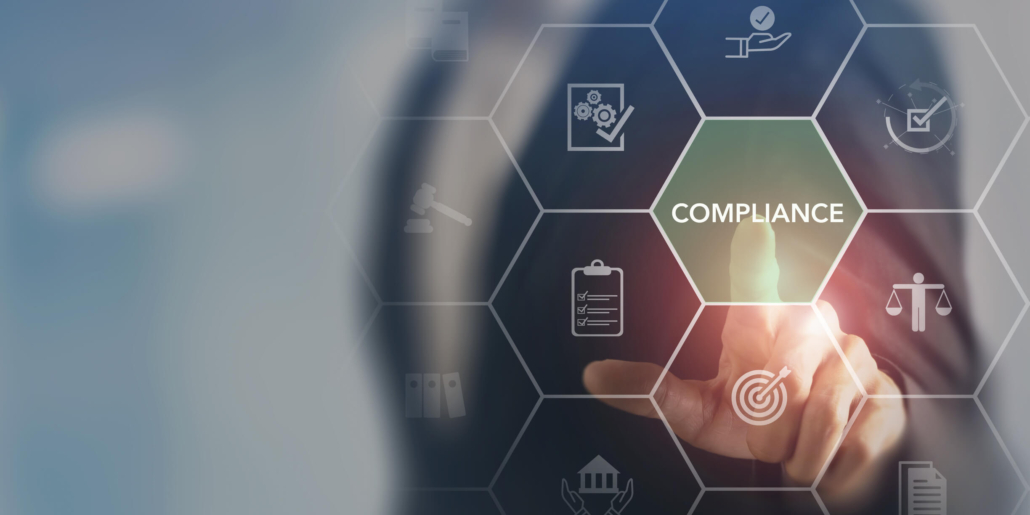As compliance service providers, in this article we discuss the important topic of SOC compliance and how we can help companies achieve compliance.
Understanding SOC Compliance
System and Organization Controls (SOC) compliance refers to a set of standards and procedures developed by the American Institute of Certified Public Accountants (AICPA). These standards are designed to help organizations ensure the security, availability, processing integrity, confidentiality, and privacy of customer data.
SOC compliance is particularly relevant for service organizations, such as data centers, cloud computing providers, and managed service providers, whose services may impact the financial reporting of their clients.
SOC compliance Purpose
SOC compliance ensures that service organizations have appropriate controls and processes in place to safeguard client data they handle.
Reports
- During an audit, service organizations produce a suite of reports known as SOC reports.
- These reports validate the internal controls over their information systems.
- The focus is on controls grouped into five categories called Trust Service Criteria.
Trust Service Criteria (TSC)
Developed by the AICPA, the TSC are used to evaluate and report on controls of information systems offered as a service.
They cover areas such as security, availability, processing integrity, confidentiality, and privacy.
The criteria align with the COSO Internal Control – Integrated Framework and can be mapped to other standards like NIST SP 800-53 and the EU General Data Protection Regulation (GDPR).
Types of Reporting
The AICPA defines two levels of reporting:
- Type I: Describes controls at a specific point in time.
- Type II: Assesses controls over a period (usually six months) and includes testing of their effectiveness.
Additional AICPA guidance specifies three types of reporting:
Compliance: SOC 1
SOC 1 focuses on the controls relevant to financial reporting. It assesses the internal controls over financial reporting, ensuring they are accurately represented and operating effectively.
SOC 1 reports are often required for organizations that provide services that could impact their clients’ financial statements.
Compliance: SOC 2
SOC 2 concentrates on the controls related to security, availability, processing integrity, confidentiality, and privacy of data.
SOC 2 reports are more broad-reaching and cover controls not necessarily related to financial reporting but are crucial for protecting sensitive information and ensuring the reliability of systems.
Compliance: SOC 3
SOC 3 similar to SOC 2, but provides a simplified version of the report intended for public distribution. It doesn’t go into the same level of detail as SOC 2 and is often used for marketing purposes to assure customers of an organization’s commitment to security and compliance.

What are Some Common Challenges in Achieving SOC Compliance?
Achieving SOC compliance can be challenging. Here are some common challenges organizations face as they strive to comply with SOC requirements:
Uncertainty in Audit Scope:
Determining which SOC framework applies and understanding the controls needed can be challenging. Each SOC type has its own set of criteria and controls that must be met, and interpreting these requirements correctly can be daunting, especially for organizations new to compliance standards.
Resource Allocation Challenges:
Achieving SOC compliance often requires significant time, effort, and resources. This includes dedicating personnel to manage the compliance process, implementing necessary controls and procedures, and investing in technology and infrastructure improvements to meet the requirements.
Limited resources or competing priorities can hinder progress and prolong the compliance timeline.
Continuous Monitoring and Maintenance:
SOC compliance is not a one-time effort but requires ongoing monitoring and maintenance of controls to ensure they remain effective over time. This includes regular assessments, audits, and updates to adapt to changing threats, technologies, and business processes.
Sustaining compliance efforts in the long term requires commitment and vigilance from the organization.
Documentation and Reporting:
Maintaining thorough documentation of compliance activities and evidence is essential for demonstrating adherence to SOC requirements and facilitating audit processes. However, keeping comprehensive records can be challenging, especially in large or decentralized organizations where information may be dispersed across various systems and departments.
Simplifying SOC Compliance with Namtek Consulting Services
To overcome these challenges, consider working with a dedicated compliance service provider. Navigating the complicated landscape of SOC compliance becomes remarkably smoother with Namtek Consulting Services. Here’s how our tailored solutions address the challenges faced by companies:
Expert Guidance and Clarity:
Uncertainty in Audit Scope often plagues organizations. Our seasoned experts help you decipher the SOC framework maze. We assess your unique context, pinpoint the relevant SOC type (SOC 1, SOC 2, or SOC 3), and guide you toward precise control deployment.
With Namtek, you gain clarity, ensuring that your compliance journey aligns perfectly with your business needs.
Efficient Control Deployment:
Gaps in Control Deployment can delay compliance progress. Our technology-driven approach bridges these gaps.
Namtek’s tools, templates, and procedures streamline control implementation.
Whether you’re starting from scratch or enhancing existing controls, we accelerate the process, ensuring alignment with SOC requirements.
Resource Optimization:
Resource Allocation Challenges need not be a stumbling block. We offer flexible services to fit your organization’s size and capacity. Choose from Fully Managed Compliance Service or a Do It Yourself Compliance approach. Our expertise supplements your internal resources, allowing you to achieve SOC compliance without straining your team.
Continuous Monitoring Made Easy:
Continuous Monitoring and Maintenance is critical for sustained compliance. Namtek’s proactive approach ensures ongoing supervision. We keep your controls effective, adapting to evolving threats, technologies, and business dynamics.
Comprehensive Documentation:
Documentation and Reporting become seamless with our support. We assist in maintaining thorough records, even in large or decentralized organizations. Your audit processes become efficient, and evidence of compliance is readily accessible.
Namtek Consulting Services empowers organizations to embrace SOC compliance confidently. Whether you’re a startup or an established enterprise, our commitment to excellence ensures that compliance becomes a strategic advantage.
Book a free consultation with our experts to find out more about our compliance service.




